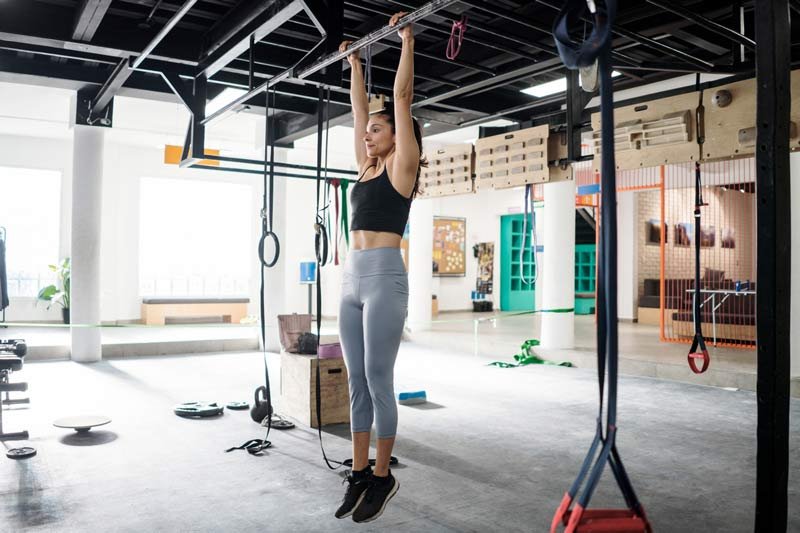The Power of Hanging
It's time to get back to celebrating simple and effective exercises, movements, and daily habits! Introducing the dead hang, a simple yet powerful exercise that anyone can incorporate into their daily routine. Whether you're a gym junkie, a desk jockey, or an older individual that wants to improve their shoulder and spine health at the same time, dead hanging offers a treasure trove of benefits that will leave you feeling stronger, more flexible, and surprisingly relaxed.
What is a Dead Hang?
A dead hang involves gripping a pull-up bar (a doorframe or kitchen sink can also serve as modifications!) allowing your body to elongate freely while gravity does its thing.
An orthopedic surgeon, Dr. John Kirsch, dedicated his practice to discovering the power of hanging, specifically regarding health of the shoulder joint. What he described was rooted in anatomy, physiology, and primal movement; highlighting that the human shoulder joint hasn’t evolved to be weight bearing like the hip, but it is designed to be weight suspending! In a 92-patient case study that he conducted, each patient had been limited by pain and function due to shoulder impingement, and 90 of the 92 experienced improvements in pain and daily function through Dr. Kirsch's dead hang protocol.
The Benefits of Dead Hanging
1. Shoulder Health: It helps in decompressing your shoulder joints, reducing pain, and enhancing mobility.
2. Improves Grip Strength: Gripping the bar works wonders for your forearms, making everyday tasks like opening jars or carrying groceries a breeze.
3. Spinal Decompression: Gravity gently stretches your spine, alleviating back pain and improving posture.
4. Thoracic Mobility/Posture: Your thoracic spine and ribs are able to relax and expand to their greatest potential, serving as an effective exercise to couple with upper back and shoulder strength exercises.
5. Stress Relief: Just hanging around can be surprisingly relaxing, helping to melt away stress.
No Pull-Up Bar? No Problem!
Don’t have a pull-up bar? No worries! Here are some fun modifications:
1. Doorframe Hang: Find a sturdy doorframe, reach up, and grip the top with both hands. Ensure your fingers are strong enough to support your weight and start hanging! Be cautious and make sure the doorframe is robust.
2. Kitchen Sink Hang: This might sound odd, but it works! Hold onto the edge of your kitchen sink, bend your knees, and push your hips straight back, bringing your chest down towards the ground. This method provides a similar stretch and is perfect for a quick hang while waiting for your coffee to brew.
Getting Started
1. Warm-Up: Start with a light warm-up to get your blood flowing. Arms circles, alternating shoulder raises, shoulder hugs etc. all work great.
2. Grip and Hang: Grip your chosen apparatus (bar, doorframe, or sink) and let your body hang, there shouldn't be tension anywhere other than within your grip to maintain the position.
3. Duration: Aim to hang for 10-30 seconds initially, working towards a cumulative total of 2-3 minutes. Gradually increase as you get stronger, advanced hangers holding each set > 45 seconds, cumulative total of at least 5 minutes.
4. Frequency: Try to incorporate dead hangs into your routine daily or several times a week.
Safety Tips
1. Listen to Your Body: If you feel pain, stop immediately.
2. Stay Safe: Ensure whatever you're hanging from is secure and can support your weight. Also, there is no shame in placing your feet to the ground or stool to modify!
3. Ease Into It: Start slow, and gradually increase the duration to avoid strain.

